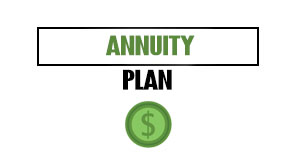Understanding a credit card bill can be challenging for first-time cardholders. The document contains critical financial information that impacts credit scores and overall financial health. A clear grasp of billing statements helps users avoid unnecessary fees and manage their finances more effectively.
Credit card statements arrive monthly and contain details about purchases, payments, and account status. For many new cardholders, these documents can seem overwhelming due to their complex sections and financial terminology.
Table of Contents
ToggleKey Components of a Credit Card Statement
Credit card bills contain several essential sections that cardholders should review carefully. The billing cycle shows the specific time period covered by the statement, typically spanning about 30 days. This timeframe determines which transactions appear on the current bill.
The transaction details list all purchases, payments, and credits that occurred during the billing cycle. These entries include the date, merchant name, and amount for each transaction, allowing cardholders to verify all charges.
Fees and interest charges appear separately on the statement. Common fees include:
- Annual fees for card membership
- Late payment penalties
- Cash advance charges
- Foreign transaction fees
Interest charges apply to unpaid balances carried over from previous billing cycles. The statement shows both the interest rate (APR) and the actual interest amount charged during the period.
Payment Information and Due Dates
The payment section of a credit card bill contains critical information about how much to pay and when. The minimum payment represents the smallest amount required to keep the account in good standing, while the statement balance shows the total amount owed.
Paying only the minimum amount will result in interest charges on the remaining balance,” explains financial educator Maria Chen. “This can significantly increase the total cost of purchases over time.”
The due date indicates when payment must be received to avoid late fees. Most credit card companies offer a grace period of at least 21 days from when the statement is issued to when payment is due.
Reward Points and Credit Score Factors
Many credit cards offer reward programs, and the statement typically shows points earned during the billing cycle. These rewards may include cash back, travel miles, or points that can be redeemed for merchandise or statement credits.
Credit utilization—the percentage of available credit being used—appears on many statements. This ratio significantly impacts credit scores, with financial experts recommending keeping utilization below 30% of the total credit limit.
Regularly reviewing your credit card statement helps catch unauthorized charges quickly and provides insight into spending patterns,” notes consumer finance analyst James Wilson. This practice is fundamental to building good credit habits.”
The statement may also include information about how late payments affect credit scores. Even a single missed payment can lower a credit score by 50-100 points and remain on credit reports for up to seven years.
Digital Tools for Statement Management
Most credit card issuers now offer online portals and mobile apps that provide real-time access to account information. These digital tools allow cardholders to check balances, review transactions, and make payments without waiting for monthly statements.
Many digital platforms also offer spending analysis features that categorize purchases and track spending patterns over time. These tools help cardholders identify areas where they might reduce expenses.
Setting up automatic payments through these platforms can help avoid late fees and missed payments. Users can typically choose to pay the minimum amount, the full balance, or a custom amount each month.
Understanding credit card statements is an essential financial skill that helps consumers maintain good credit scores and avoid unnecessary costs. By carefully reviewing each section of the bill and paying attention to payment deadlines, cardholders can use credit cards as practical financial tools rather than sources of debt.
















